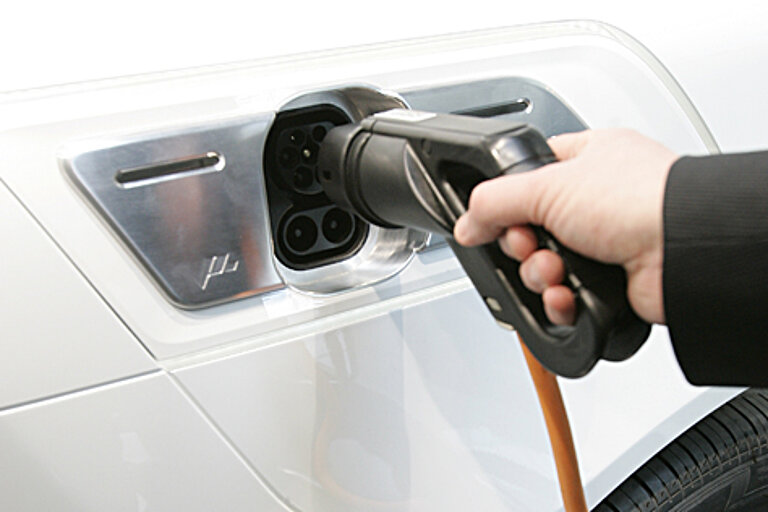Publications
![[Translate to Englisch:] [Translate to Englisch:]](/fileadmin/user_upload/Presse_und_Medien/mediathek/YouTube-Vorschaubild/NOA-Namur-Open-Architecture-Connectivity.jpg)
Germany wants to become the lead market for electro-mobility. The political expectations are clearly formulated: by 2020, a million vehicles will be powered by electricity. This will require a suitable charging infrastructure.

© ZVEI
The vision is clear and unambiguous: electric cars will be an indispensable part of the new energy world. Because in this world, it is no longer just a matter of energy generation, but also its storage and supply into the grid. Through its storage, the electric car fits in perfectly with this new paradigm.
In times of high power generation, such as high winds or intense sunlight, it can store energy in its battery. The “refuelling” with electricity from renewable energies can also make an important contribution to reducing CO2 emissions.
To make this vision a reality, the frist step is to create a functional and user-friendly charging infrastructure for electric vehicles. This investment must take priority over all others, because only then will it be possible to create general public acceptance of electro-mobility. The customers will only purchase an E-vehicle if they have the security of being able to recharge their car easily and anywhere. This is still not the case: in 2011 there were 14,500 conventional filling stations, compared to only 2,000 charging points for electric vehicles.
The National Platform for Electro-mobility (NPE) recommends the installation of intelligent charging infrastructure firstly at those locations where the vehicles are potentially parked for longer – i.e. at home or at the workplace. The NPE estimates a total requirement of nearly one million charging points for 2020. The establishment of the charging infrastructure will begin rather on private premises, but will then increasingly be relocated to public areas. This development will be further accelerated by the increasingly shorter charging times.
While charging can be carried out in the private sector with “normal” alternating current, direct current charging is being discussed for the fast intermediate charging of vehicle batteries. The wireless inductive charging of vehicles is also being researched currently as a further option.